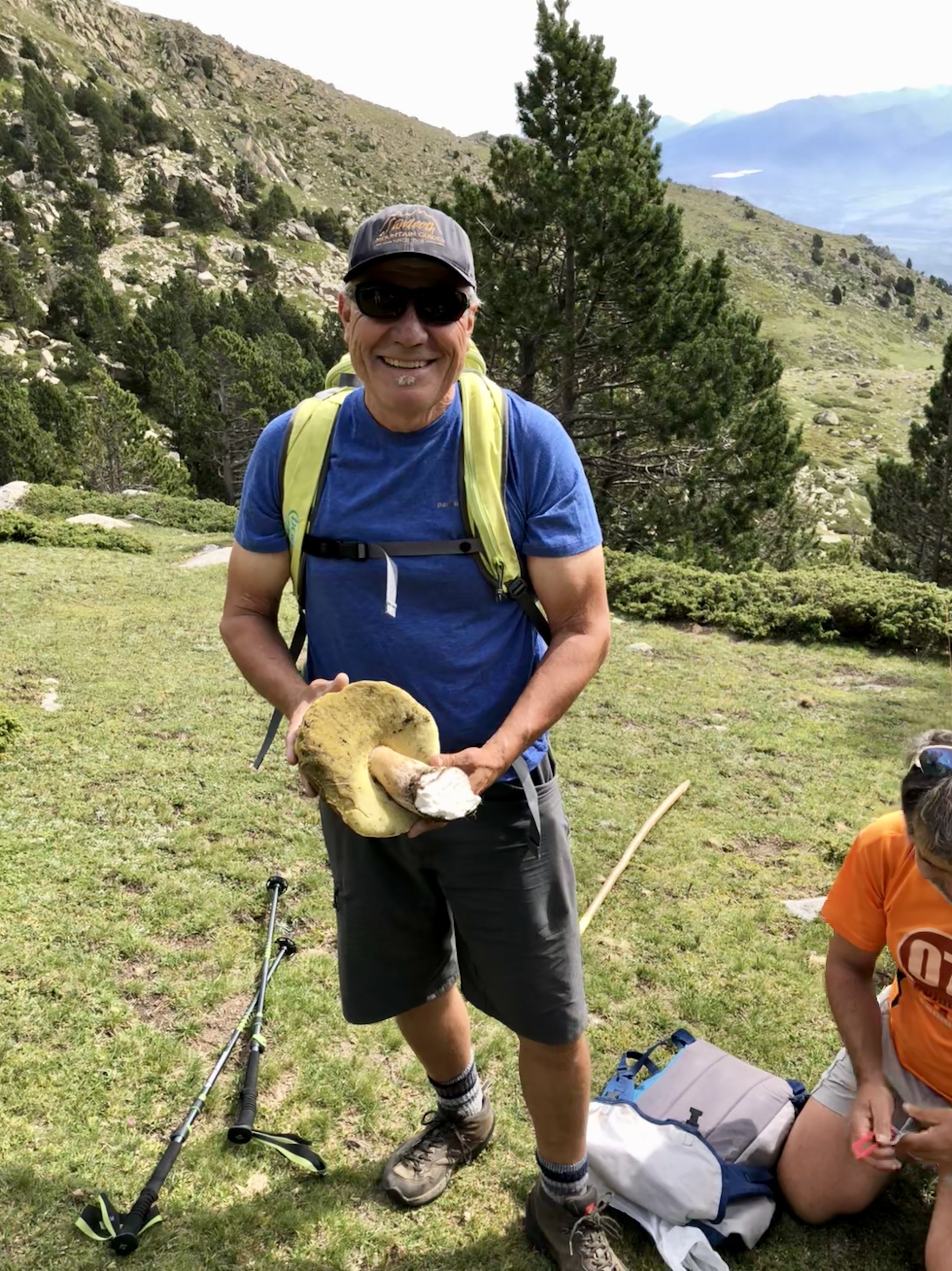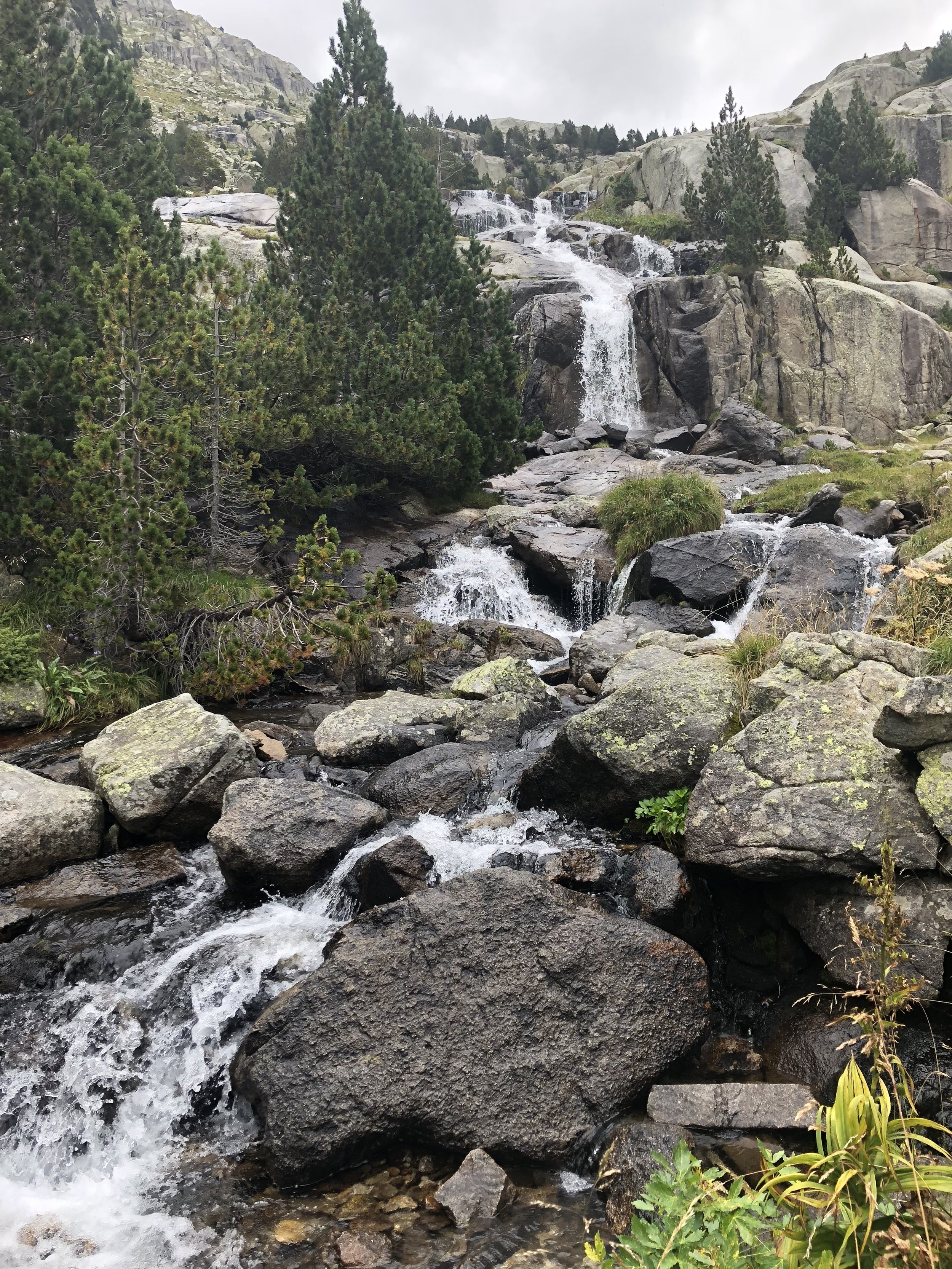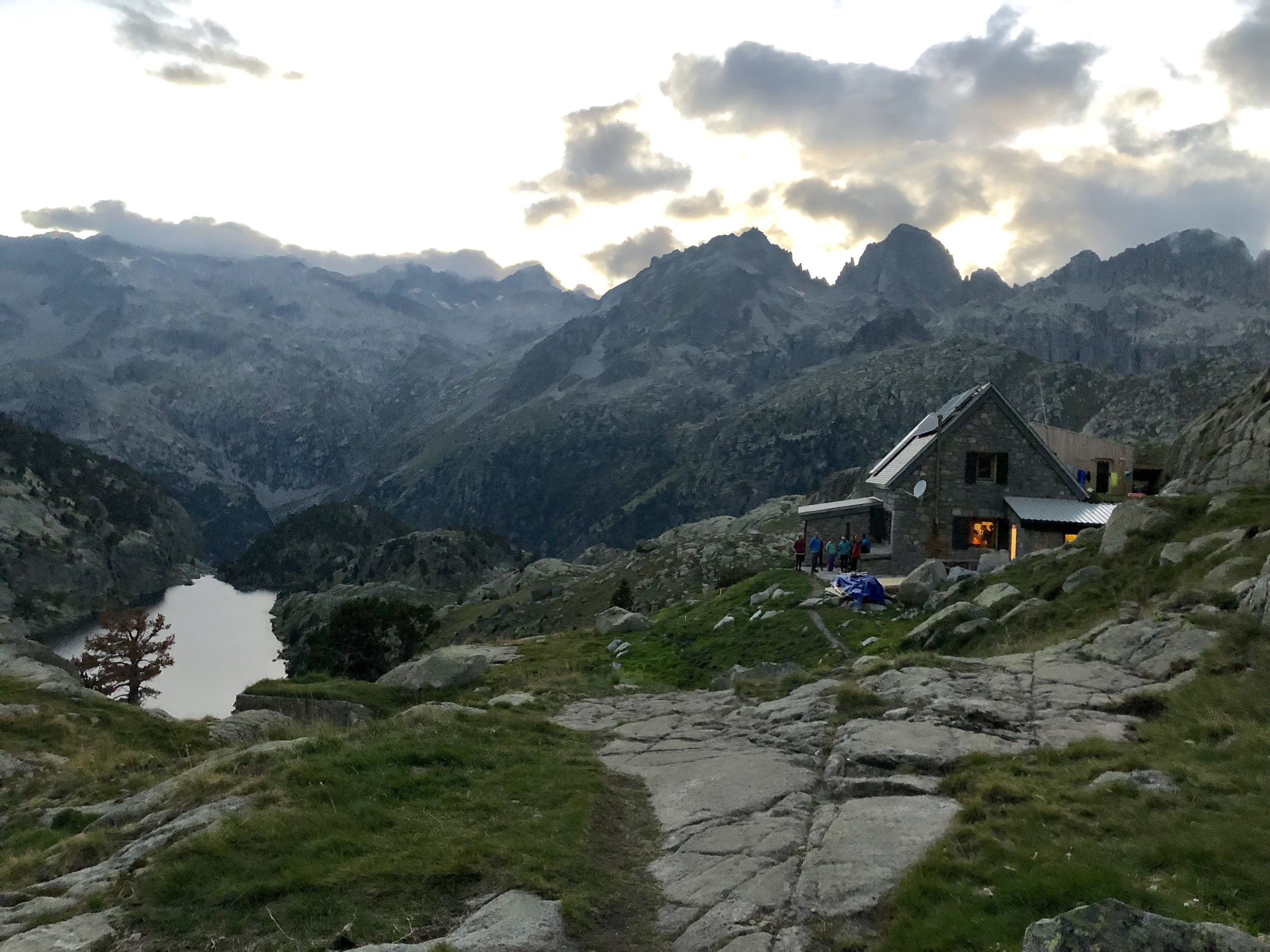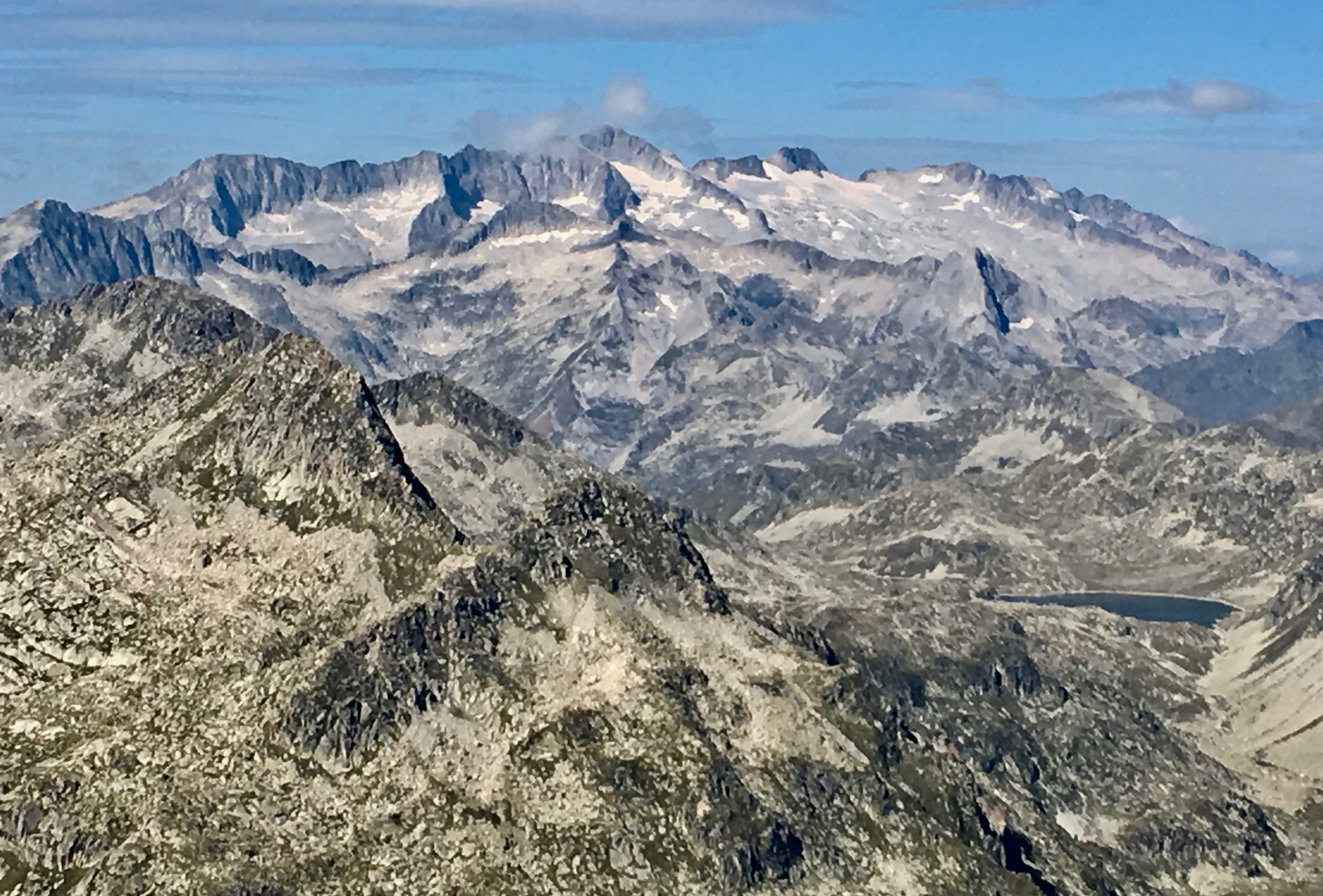Trip Report: Spanish Pyrenees (Part One)
Summary
As life-long mountaineers, the Pyrenees, which provide a natural geographic border between northern Spain and southern France have long captured our imagination as a place to discover and explore. Also being Idaho residents with a rich culture of Basque immigrants who inhabit SW Idaho and northern Nevada we were doubly intrigued to tour the north of Spain. Many of our friends who have been to that part of the world insisted that the best way to explore was by car, in order to have a more flexible schedule as well as being able to wander more remote parts of the country. Upon completing this journey (and road trip) I can say, Spain is a big country and the northern part is mountainous with many winding roads. Along the way, we took in and saw much of northern Spain. Part One of this Report only touches on our ‘out of the car’ experience of the Pyrenees. The Road Trip taking in the Basque country and the rich culture of Spain is detailed in Part Two.
With the objective of going to trek in the Pyrenees, we elected to focus on the Central region where the highest peaks in the range are. Because we had been introduced to meet up with local mountaineers, Jordi and Aurora, who split their time in Barcelona and the eastern Pyrenees, we had an initial leg up on getting a handle on a quality experience with the time we had. Our Port of Entry from the US was Barcelona, the capital of the Catalonia region of northern Spain. Our Pyrenees wanderings were focused entirely within this vast Catalan region that is expansive, surrounding all of Barcelona, along the Mediterranean Coast to the east and north extending well into southern France. The Catalan region, as well, extends west into the Central Pyrenees where the highest peaks are and was the location for our trek.
Even though I had a fair amount of experience in traveling South America working as a Mountain Guide and had reasonable Spanish speaking skills, I quickly realized, the Catalonians preferred to speak their Catalan language. Reality struck that in addition to having different terms for things like lakes (not lagos rather estanys), there also were a lot of “x’s” and “o’s” mixed into words. As one neared the border close to France the language dialects were further muddled with the influence of their northern neighbor. Oh well, time to open one’s mind to what one does not know- thus a big adventure in adjusting to the language that continues to change as you wander through the Pyrenees.
Our friends insisted before leaving Barcelona we visit the Monastery of Montserrat perched high in the hills just NW of Barcelona. This is a great way to shed jet lag and get some exercise before leaving Barcelona. While traveling in northern Spain and the Pyrenees one is the reminded of what a large role the Catholic Church played in the country throughout the mountains. The monasteries which are perched high in the mountains are still in use and are also a large part of the cultural landscape.
Because our friends, also like ourselves, split their time between the mountains and the city, we were invited to re-join them in the eastern Pyrenees at their mountain home in Puigcerda. Jordi, a veteran Himalayan climber and life-long Ski Randonee competitor, had a lot of credibility with us as to his recommendations. He grew up skiing and climbing in the Pyrenees and liked our plan of taking in a route to capture the sights along the coast north (Costa Brava), cross into France and then head through the eastern Pyrenees, a visit to Monastery du Canigou, And then join them in Puigcerda for some walks near their mountain home.
Our plan to visit the central Pyrenees by heading into the Refugi Ventosa I Cavell put us into an area of the Pyrenees he particularly liked. Also, a mountaineering friend of his from Himalayan days operated the hut and Aurora’s niece also worked there. They assisted us with reservations, and gave their family and friends a head’s up that we would be coming to visit. Upon arrival and while at the hut, they extended a cordial welcome complete with complimentary wine and beer, during our 3-day stay plus ideas on great treks in the area.
We were awestruck by the beauty of the Pyrenees, loved the open grassy alpine laced with lakes and waterfalls. Enjoyed the charm of cows and their bells often heard ringing as one hiked. The granite peaks were beautiful to scramble among, and offered much potential for rock climbing if one was inclined to carry ropes and hardware rather than traveling light as we did. Next time we will come back and visit the other huts in the area, as there is a vast network. If you were to pick just one location to go this would be it. A longer trip would allow more time in the Pyrenees!
Map
Highlights
Driving through the geography of the Pyrenees, which serves also as the Spain/France Border.
Centuries of architecture and rural settlements, villages, farms, monasteries and cathedrals, and military fortresses.
International mountain culture experienced while out trekking.
Awesome mountain walking and scrambling in the high alpine among Granite Peaks. Great for off-trail!
Gorgeous lakes and waterfalls and wonderful surrounding- easy to navigate with map and compass.
Season/Time Frame
Autumn is a great time to go and September is beautiful and less crowded in the mountains- though still very popular time for tourists on the treks and in the mountain huts. Our trip into the mountains was combined while also seeing other parts of northern Spain by car. Their seasons are similar to ours in North America.
We only had a week to spend with the Pyrenees piece of our travels as it was combined with seeing other parts of northern Spain travels. Next time we would allow for 2-weeks in the mountains including drive time from Barcelona to visit the sights along the way.
Logistics
Rent a car with navigation. Lots of roundabouts!
Port of Entry is Barcelona. Spend 2 nights there to see city sights, get rental car. Recommend traveling through Figueres to the Costa Brava (Mediterranean) and continuing into France. Travel east to West from France, Spain, Andorra as a route into the central Pyrenees.
Alternate route would be to fly to Bilbao of San Sebastian from the West, starting from the Basque country traveling east. Could incorporate the western Pyrenees.
Out-Takes
It takes time to take in northern Spain. Trips should consider priorities for time in the mountains while also allowing time to see the other things northern Spain has to offer.
We definitely would allow for more time for longer walks in the Pyrenees. A 2.5-3 week trip either anchored to Barcelona as a return location or the same but from Bilbao or San Sebastian. Allow a minimum of a week of trekking (central Pyrenees).
Use of huts allows for traveling light while in the mountains. No need for sleeping bags, just a silk liner. Food and wine/beer in all the huts.
Bring a 40 liter pack for multi-day treks with the complete clothing for the alpine (nimble mtn. footwear, gore-tex for rain, and layers for cool mountain weather.) Hiking poles a plus.
Spain- $$ travel is on par with USA. Hut/night + half-board (breakfast dinner) is $50/person


















